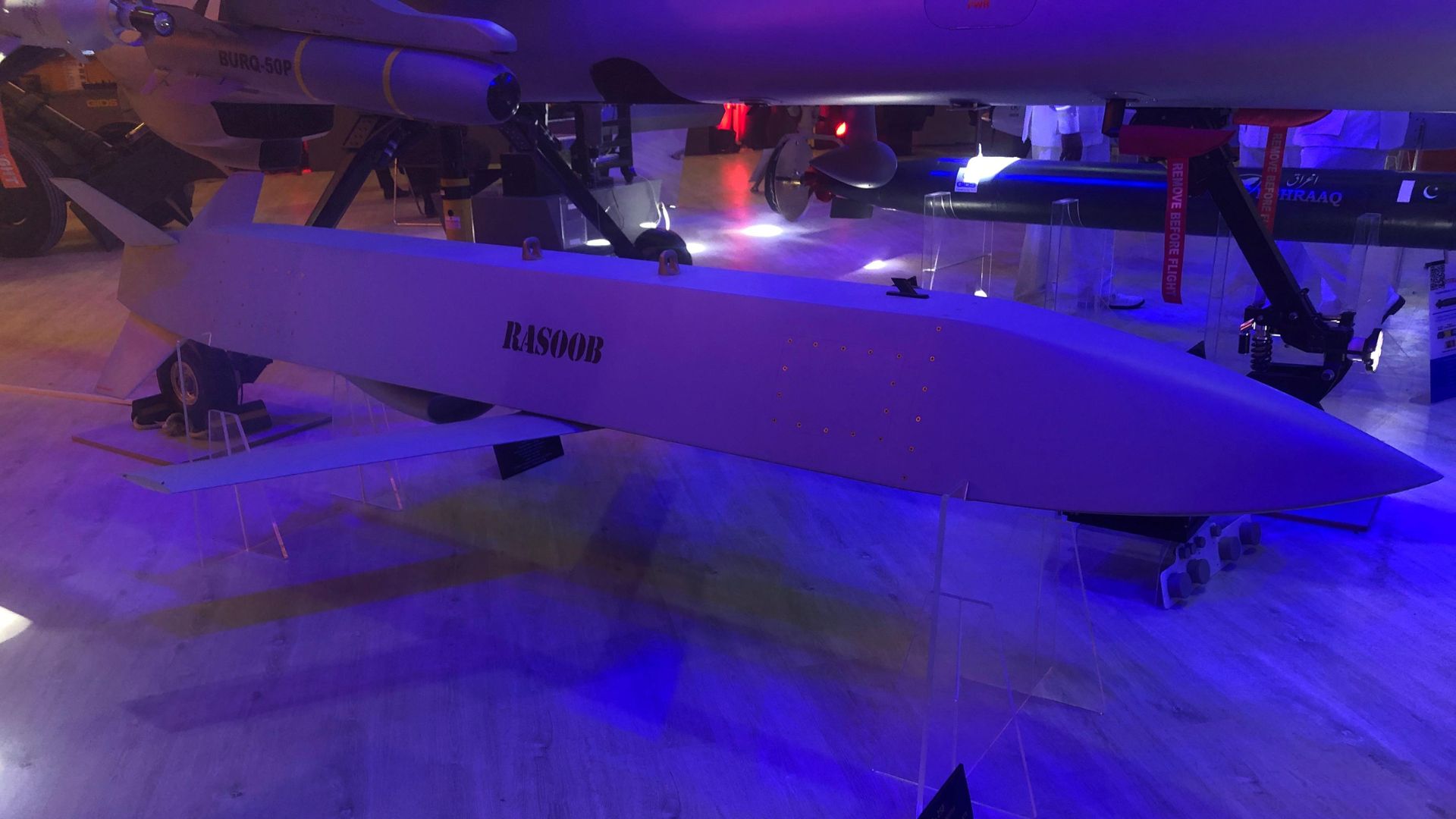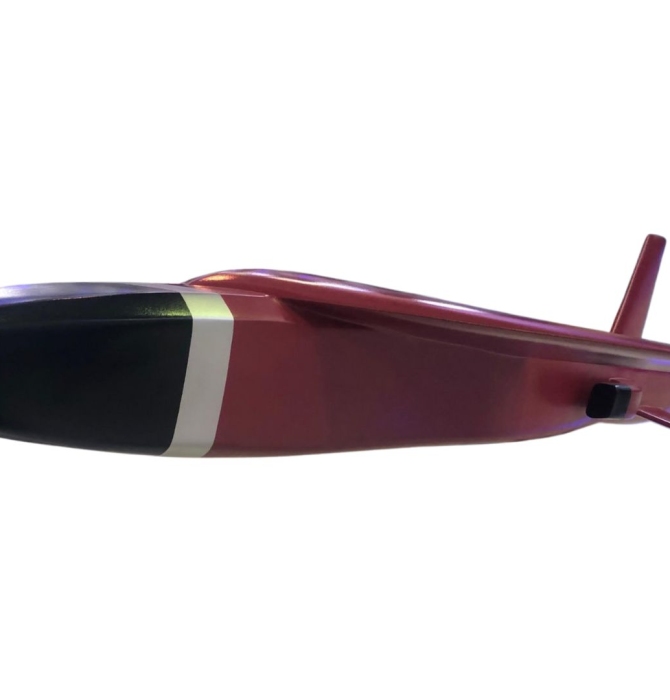5714Views

GIDS Rasoob 250 Air-Launched Cruise Missile (ALCM)
Global Industrial Defence Solutions (GIDS) revealed the Rasoob 250 air-launched cruise missile (ALCM) at the 2024 International Defence Exhibition and Seminar (IDEAS 2024).
The Rasoob 250 is the third of Pakistan’s mainline ALCMs, following the strategically-focused Ra’ad-I/II and the export-centric Taimoor. The Ra’ad-series and Taimoor were developed by Air Weapons Complex (AWC), a subsidiary of the National Engineering and Scientific Commission (NESCOM).
Therefore, it is likely that the Rasoob 250 was also developed by AWC, which could draw on its existing technology stack to design the new lightweight ALCM relatively quicker.
From a design standpoint, the Rasoob 250 seems to take on the “X” tail-stock configuration of the Ra’ad-II and Taimoor. But there is also a stronger emphasis on low-observability (LO) in the Rasoob 250’s airframe design. This is apparent in the more angular characteristics of the airframe and its smaller size, which may result in a relatively low radar cross-section (RCS).
GIDS did not release the length and width specifications of the Rasoob 250. However, given its weight and intended use from slow-flying aircraft, it bears conceptual similarity to the Turkish Roketsan Çakır, another lightweight cruise missile. In fact, the Çakır has a total weight of 275 kg, about 10 kg less than the Rasoob 250. The MBDA Italia Marte-series is also close in range and weight to the Rasoob 250.
Rasoob 250 Specifications
- Range: 350 km
- Weight: 285 kg (with booster)
- Warhead Weight: 75 kg
- Warhead Type: Semi-Armour Piercing
- Cruise Speed: Mach 0.7
- Accuracy: Under 5 m CEP
- Powerplant: TBD (possibly NESCOM NTJ-V1)
- Length: TBD (possibly 3-4 m like the Roketsan Çakır)
- Width: TBD (possibly 200-275 mm like the Roketsan Çakır)
- Seeker: TBD (possibly GNSS, INS, TERCOM/DSMAC, and/or IIR)
Key Capabilities of the Rasoob 250
Flexible Platform Compatibility
The Rasoob 250 was designed so that it can be deployed from lighter weight and slower flying aircraft, such as the Shahpar-III medium-altitude long-endurance (MALE) unmanned aerial vehicle (UAV), Sea King naval helicopters, and the RAS-72 Sea Eagle maritime patrol aircraft (MPA).
This capability stands in clear contrast to the Taimoor and Ra’ad-series, which were designed to launch from fast-jet aircraft, like the JF-17 Thunder and the Mirage III/5.
Low-Observability on Radar
Like the Taimoor and Ra’ad-series, the Rasoob 250 bears a ‘stealthy’ airframe. It is likely that the ALCM draws on composite materials to help reduce its RCS. In addition, its smaller size compared to the Ra’ad and Taimoor could further reduce its RCS compared to its larger counterparts.
Accuracy Over Explosive-Yield
Besides giving a wider variety of platforms a stand-off range weapon (SOW), the growing presence of small guided munitions is also being driven by a greater focus on accuracy. The intended concept is to increase the munition’s accuracy and, in turn, depend less on explosive yield as a means of destroying targets. This allows designers to reduce the size and weight of the warhead.
With the SOEs behind GIDS working on a growing portfolio of loitering munitions with autonomous and more precise targeting, it is possible that these learnings are making their way to Pakistan’s ALCMs.
News Updates, Comments, and Analysis
The stated range of the Rasoob 250 exceeds the limits established by the Missile Technology Control Regime (MTCR). Thus, it is likely that the Rasoob 250 was developed for a domestic end-user first and foremost, potentially the PN. However, a MTCR-compliant version will likely follow shortly.
It is worth noting, however, that the design of the GIDS Rasoob 250 also emulates the Joint Strike Missile (JSM), produced by Norway’s Kongsberg Defence and Aerospace and American contractor Raytheon. A key aspect of the JSM is that it can be carried and launched from a F-35 Lightning II’s internal bay.
Thus, it is possible that AWC is steering the Rasoob 250’s development for a long-term requirement of the Pakistan Air Force (PAF). The PAF stated that it plans to induct the Chinese Shenyang J-31 (or J-35A). It may require a small ALCM for use from the J-31/J-35A’s internal weapons bay.
Interestingly, the “250” in the Rasoob 250’s designation also implies that the Rasoob will be a series of new ALCMs. The “250” may correspond to the general weight class of the current missile, which weighs 285 kg, inclusive of a booster. Without the booster, the weight of the Rasoob 250 may be 250 kg.
One could plausibly see a heavier or larger version of the Rasoob, one that is closer in capability to the JSM and the Turkish Roketsan SOM-J.


